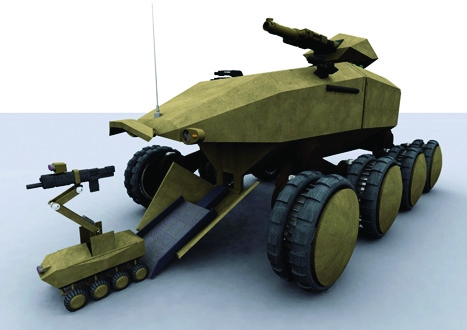The future of military tanks
Flexible fighters: A fundamental design rethink could see the tank of the future perform a variety of new roles.

The 20th century saw the mechanisation of transport, and warfare was the cradle and the laboratory for many vehicles. None of them, however, has become as potent a symbol as the tank. From its first appearance in the First World War, to the images of massed tank battles in the Second World War and beyond, the tank has become as much a metaphor for implacable military superiority as a force in itself. When prime minister Harold Wilson told a union chief in the 1970s to ’get your tanks off my lawn’, nobody doubted what he meant.
Conceived in the mid-19th century as a way of combining the functions of horse cavalry and mobile artillery pieces, the tank has had a familiar form and role since the 1940s – a lozenge-shaped body, protected by thick armour plate, running on tracked wheels and with a large gun on a rotating turret. They generally use large diesel engines, and the crew inside, although protected, have limited visibility, using periscopes or camera systems to see outside.
Register now to continue reading
Thanks for visiting The Engineer. You’ve now reached your monthly limit of premium content. Register for free to unlock unlimited access to all of our premium content, as well as the latest technology news, industry opinion and special reports.
Benefits of registering
-
In-depth insights and coverage of key emerging trends
-
Unrestricted access to special reports throughout the year
-
Daily technology news delivered straight to your inbox










Water Sector Talent Exodus Could Cripple The Sector
Maybe if things are essential for the running of a country and we want to pay a fair price we should be running these utilities on a not for profit...